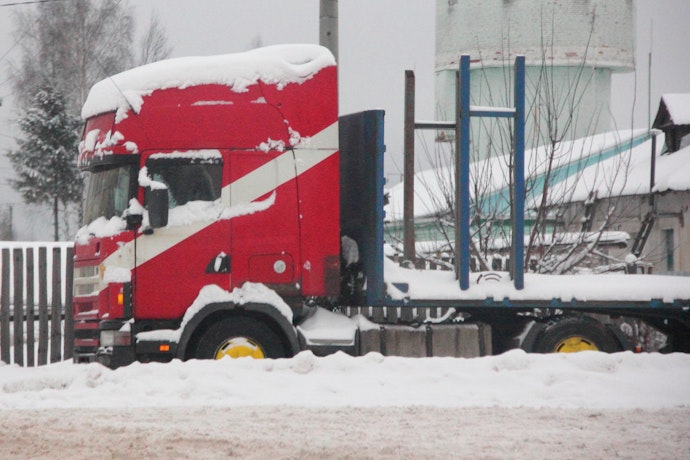4 Ways Telematics Can Improve Fleet Maintenance
4 Ways Telematics Can Improve Fleet Maintenance
Read more
With winter weather, come hazardous driving conditions. This especially makes life tough for the commercial fleets in certain regions of the United States, with an added challenge of frequent stops and longer idle times.
With the consistent increase in stops and idle time, the regular issues of fuel wastage, wear and tear, and dangerous emissions snowball into much bigger proportions. Let’s take a closer look at the perils of winter driving based on the data captured from real vehicles and drivers.
Cold weather and winter driving conditions can significantly reduce fuel economy. Fuel economy tests show that, in city driving, a conventional gasoline car's gas mileage is roughly 15% lower at 20°F than it would be at 77°F. It can drop as much as 24% for short (3- to 4-mile) trips.1
Cold weather effects can vary by vehicle model. However, expect conventional gasoline vehicles to suffer a 10% to 20% fuel economy loss in city driving and a 15% to 33% loss on short trips.1
Did you know that ICE trucks burning conventional diesel emit the largest amount of CO2?2 With the spike in demand and the consequent deliveries, the December holiday rush adds to the distances traveled and the number of stops made. Our holiday data shows that the Northeast and Midwest regions rank the highest in overall stops and fleet miles driven year-over-year.
Fleet owners and operators need to keep a close tab on fuel consumption and idling time. This trend could have a direct impact on cost and fuel economy of the fleet business. Top that with tighter emission norms and the challenge becomes much larger than expected.
With more frequent stops, additional miles covered, increased idle time and heightened fuel consumption during the winter season, vehicle cost and productivity are key concerns. Safety is also an important factor, given the hazardous road conditions on snow-covered highways where drivers are often driving for long night shifts and into early morning hours.
Proper maintenance is especially critical as trucks take a beating during harsh winter weather, and excessive engine idling can increase vehicle maintenance costs. Here are some facts to consider:
Reducing vehicle idling time saves fuel and money, cuts pollution and greenhouse gas emissions, and contributes to U.S. energy security. Decreasing idle time can also reduce engine wear and associated maintenance costs, especially for heavy-duty trucks. Even when fuel prices are as low as $2 per gallon, that wasted fuel translates into more than $11 billion annually.3
Reducing idle time starts with your drivers. Given unpredictable weather conditions, coupled with increased holiday fleet traffic during the winter season, having the right tools is the key. GPS fleet tracking and its associated technologies can help your drivers and your vehicles better weather the winters.
During the harsh winter months and busy holiday season, keeping vehicles up and running is essential. Fleet tracking solutions help streamline maintenance processes by providing:
Find the right solution for your business with our free Fleet Management Buyer’s Guide.
1 https://www.energy.gov/energysaver/fuel-economy-cold-weather
2 https://truckingresearch.org/2022/05/03/understanding-the-co2-impacts-of-zero-emission-trucks/
3 https://afdc.energy.gov/conserve/idle_reduction_benefits.html
Tags: Data & Analytics, Fuel cost management, Team Management, Vehicle Maintenance




Find out how our platform gives you the visibility you need to get more done.
4 Ways Telematics Can Improve Fleet Maintenance
Read more6 ways telematics supports sustainability
Read moreWhen you rely on your vehicles as an essential part of your business, you may be accumulating hidden costs.
Read moreLearn how GPS tracking can help reduce fuel costs...
Read more